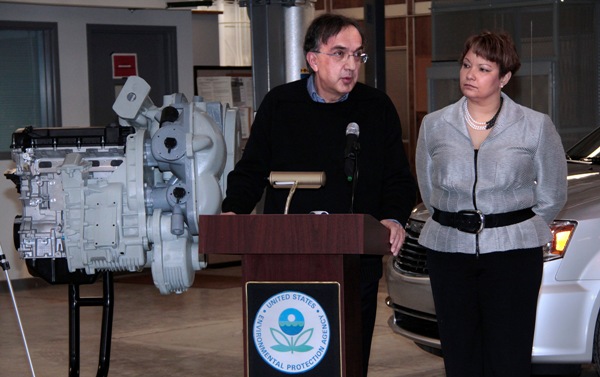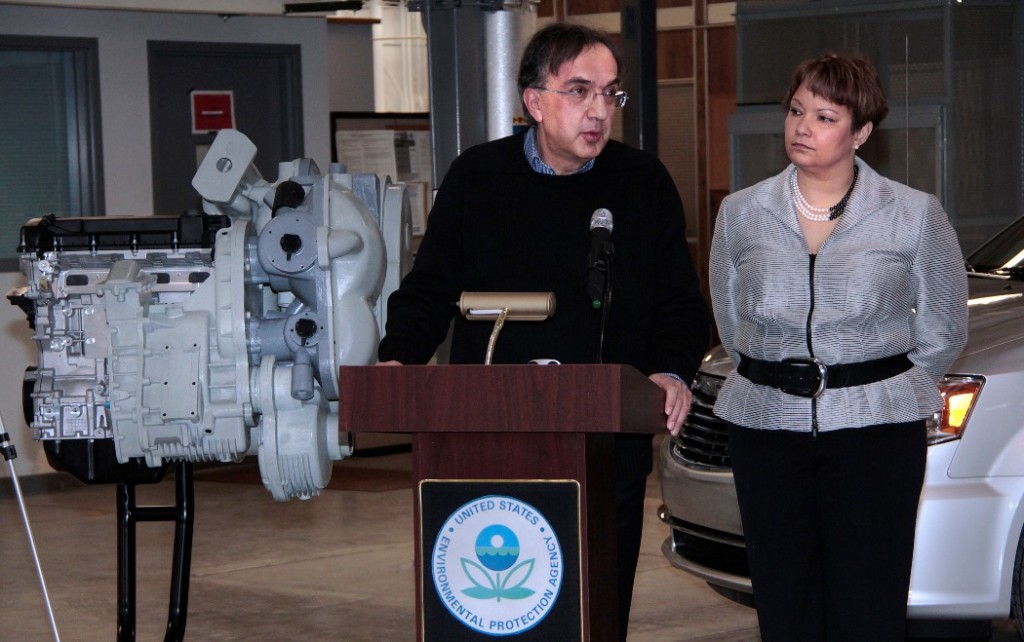
Chrysler Group CEO Sergio Marchionne and EPA Administrator Lisa P. Jackson announce a partnership to explore and evaluate how the EPA’s Hydraulic Hybrid Vehicle technology can be applied to light duty vehicles.
You’ve probably read by now of the Chrysler Group-U.S. EPA announcement yesterday that we’ll be working together to develop and evaluate Hydraulic Hybrid Vehicle technology for use in minivans. If you missed the details, here are the basics:
- Chrysler Group approached the EPA about the project, and the two are working to see if HHV can be used in minivans. HHV is already in use in heavy-duty vehicles like delivery trucks.
- Because of their size, minivans are an obvious choice for this R&D project. Project’s timeline calls for completion of design and build by Novermber; evaluation to be finished by July 2012.
- Goals include improving overall fuel economy by 30-35%, and city fuel economy by up to 60%.
- HHV advantages include potential for faster payback due to lower cost and greater regenerative efficiency than Hybrid Electric Vehicles.
- Chrysler Group funding “majority of the project.”
- EPA investing $2 million in project, according to EPA Assistant Administrator for Air and Radiation Gina McCarthy
- EPA’s work on project will take place at its National Vehicle and Fuel Emissions Lab, Ann Arbor, Mich.
From his talk, Chrysler Group CEO Sergio Marchionne had several key points, including:
- “Green technology development is an appropriate area for collaboration between government and the private sector. To re-change the game, we need to share a vision and work together to overcome the obstacles to reducing automotive emissions and fuel consumption.”
- The project “reflects Chrysler Group’s aggressive quest for sustainable mobility.”
- “The environmental improvements per dollar spent are dispropotionate in the area of electrics versus efforts to improve tradtitional powertrains and evenutally couple them with some type of hybrid solution. We’re still seeing many opportunities to increase the fuel efficiency of internal combustion engines as we look to deliver the best value for the ultimate customer.”
- “Chrysler’s alliance Fiat is one indication of our commitment to go green. Fiat is recognized as the most eco-performing automaker in Europe today, with the lowest CO2 emissions of any major automaker.”
- Through the development and use of the new V6 Pentastar Engine, Fiat’s MultiAir Engine, the R&D project with the EPA, the planned 2013 introduction of a 9-speed transmission on front-wheel drive vehicles — we’ll be the first — and other developments, “I have no doubt that by 2013, we will have one of the most fuel efficient fleets of any of the automotive makers in the United States,” Marchionne said.
- One of the keys for government being able to drive improved fuel efficiency technologies in the private sector is if it remains “technology-neutral,” Marchionne said.
You can watch and listen to U.S. EPA Administrator Lisa Jackson’s comments below. For Marchionne’s full talk, check out our YouTube Channel.




